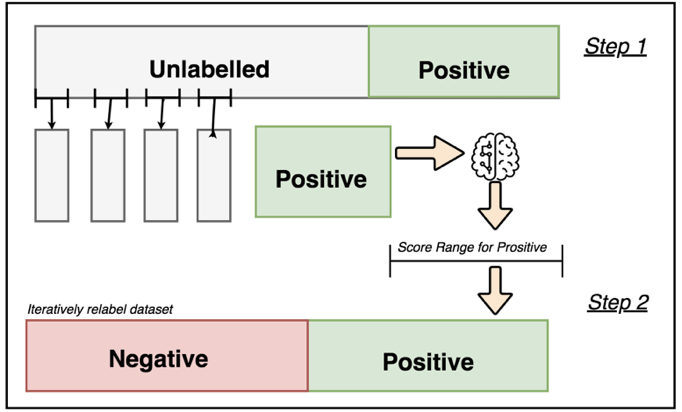文章内容如有错误或排版问题,请提交反馈,非常感谢!
Unicodedata简介
unicodedata模块是Python标准库中的一个模块,用于处理Unicode字符数据。Unicode是一种字符编码标准,它能够为世界上几乎所有的字符提供唯一的编号,支持多语言文本的表示。它提供了一些工具和函数,允许用户获取有关Unicode字符的信息,如字符的属性、名称、分类等。这对于处理国际化文本、验证字符、执行字符转换等操作非常有用。

产生背景
- 全球化和多语言支持:随着计算机应用的全球化发展,支持多语言文本处理变得越来越重要。Unicode是一个全球性的字符编码标准,能够表示来自不同语言和文化的字符。
- 统一字符编码:在Unicode出现之前,不同的国家和地区使用不同的字符编码,这导致了跨语言文本处理的复杂性。Unicode提供了一个统一的字符集,简化了多语言文本的处理。
- Python的广泛应用:作为一种通用编程语言,Python被广泛应用于各种国际化和本地化的项目中。unicodedata模块提供了对Unicode字符的强大支持,帮助开发者更轻松地处理多语言文本。
使用场景
- 字符分类:判断一个字符属于哪一类(如字母、数字、标点符号等),这在文本分析和处理任务中非常常见。
- 字符标准化:将不同表示形式的字符转换为标准形式,以便进行比较和处理。例如,é可以表示为单个字符(U+00E9)或组合字符(e+́)。
- 字符信息查询:获取Unicode字符的详细信息,如字符名称、类别等。这对于文本处理和数据分析非常有用。
- 国际化应用:在处理国际化和本地化应用时,unicodedata模块可以帮助处理不同语言的字符编码问题。
Unicodedata使用简介
unicodedata.name(char, default=None)
获取Unicode字符的名称。如果字符没有名称,则返回指定的default值。
- char:要查询的单个字符。
- default:如果字符没有名称,返回该默认值(默认为None)。
import unicodedata
name = unicodedata.name('A')
print(name) # 输出: LATIN CAPITAL LETTER A
name = unicodedata.name('©', 'UnknownCharacter')
print(name) # 输出: COPYRIGHT SIGN
name = unicodedata.name('!', 'UnknownCharacter')
print(name) # 输出: UnknownCharacter
unicodedata.lookup(name)
通过Unicode名称查找字符。name必须是Unicode字符的名称。
- name:字符的Unicode名称。
import unicodedata
char = unicodedata.lookup('COPYRIGHT SIGN')
print(char) # 输出: ©
unicodedata.category(char)
获取字符的Unicode类别。例如,字符的类别可以是字母、数字、标点符号等。
- char:要查询的单个字符。
import unicodedata
category = unicodedata.category('A')
print(category) # 输出: Lu (Letter, uppercase)
category = unicodedata.category('1')
print(category) # 输出: Nd (Number, decimal digit)
unicodedata.bidirectional(char)
获取字符的Unicode双向性(bidi)类别。用于处理双向文本(如阿拉伯语和希伯来语)。
- char:要查询的单个字符。
import unicodedata
bidi = unicodedata.bidirectional('A')
print(bidi) # 输出: L (Left-to-right)
bidi = unicodedata.bidirectional('א')
print(bidi) # 输出: R (Right-to-left)
unicodedata.combining(char)
获取字符的Unicode组合类。组合类指示字符是否是一个组合字符。
- char:要查询的单个字符。
import unicodedata
combining = unicodedata.combining('A')
print(combining) # 输出: 0 (Not a combining character)
combining = unicodedata.combining('́') # Combining acute accent
print(combining) # 输出: 230 (Combining acute accent)
unicodedata.decomposition(char)
获取字符的Unicode分解形式,返回一个由分解后的字符组成的字符串。
- char:要查询的单个字符。
import unicodedata
decomposition = unicodedata.decomposition('é')
print(decomposition) # 输出: 00E9; 0065 0301
unicodedata.decimal(char, default=None)
获取字符的十进制数字值。如果字符不是十进制数字,则返回指定的default值。
- char:要查询的单个字符。
- default:如果字符不是十进制数字,返回该默认值(默认为None)。
import unicodedata
decimal = unicodedata.decimal('4')
print(decimal) # 输出: 4
decimal = unicodedata.decimal('A', default='Not a decimal')
print(decimal) # 输出: Not a decimal
unicodedata.numeric(char, default=None)
获取字符的数字值(可以是整数或浮点数)。如果字符没有数字值,则返回指定的default值。
- char:要查询的单个字符。
- default:如果字符没有数字值,返回该默认值(默认为None)。
```python
import unicodedata
numeric = unicodedata.numeric('4')
print(numeric) # 输出: 4.0
numeric = unicodedata.numeric('Ⅻ')
print(numeric) # 输出: 12.0
numeric = unicodedata.numeric('A', default='Not a number')
print(numeric) # 输出: Not a number
unicodedata.combining(char)
获取字符的Unicode组合类。组合类指示字符是否是一个组合字符。
- char:要查询的单个字符。
import unicodedata
combining = unicodedata.combining('A')
print(combining) # 输出: 0 (Not a combining character)
combining = unicodedata.combining('́') # Combining acute accent
print(combining) # 输出: 230 (Combining acute accent)
unicodedata.normalize(form, text)
将文本标准化为指定的Unicode规范形式。form可以是’NFC’(规范组成形式),’NFD’(规范分解形式),’NFKC’(兼容规范组成形式)或’NFKD’(兼容规范分解形式)。标准化文本对于字符比较和处理非常重要。
import unicodedata
text = 'é' # é可能由两个字符组成(e+́)
normalized_text = unicodedata.normalize('NFC', text)
print(normalized_text) # 输出: é
参考链接:
- unicodedata — Unicode数据库—Python 3.13.0 文档
- A Beginner-Friendly Guide to Unicode | by Jimmy Zhang | We’ve moved to freeCodeCamp.org/news | Medium
- Unicode & Character Encodings in Python: A Painless Guide – Real Python
“`



